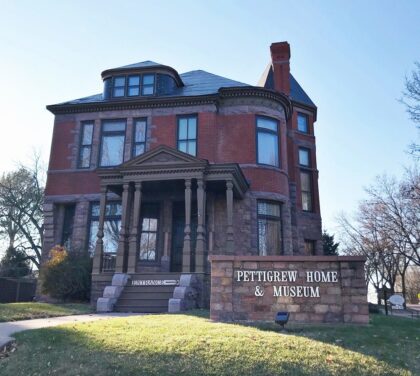Sioux Falls History
Sioux Falls History
Sioux Falls is named for the Sioux Tribe of American Indians and the waterfalls of the Big Sioux River, located a few blocks from today’s downtown district. The Falls remain a popular local landmark and tourist attraction. Many of the buildings of Sioux Falls’ pioneer past were constructed out of the region’s distinctive pink quartzite and serve as testimony to the founder’s hard work, vision and commitment to community.

Pioneers first staked claims on the banks of the Big Sioux River prior to the Civil War in 1856. Homesteaders continued to settle in Sioux Falls bringing the population up to 2,100 by 1880. The village of Sioux Falls was incorporated in 1876 and became a city in March of 1889. By the turn of the century, the prairie settlement had grown into a city of more than 10,000.
From there, Sioux Falls’ population has grown by over 10,000 residents each decade breaking the 150,000 barrier in 2009. Today’s rapidly growing population is mindful of those visionaries who set into motion the industry, prosperity and quality of life that continue as vital sources to the area’s businesses and families alike.
You can learn more about the history of Sioux Falls at the Old Courthouse Museum. Be sure to also catch a glimpse of those pioneer days by visiting the Pettigrew Home & Museum, the former home of South Dakota's first senator, Richard F. Pettigrew.

